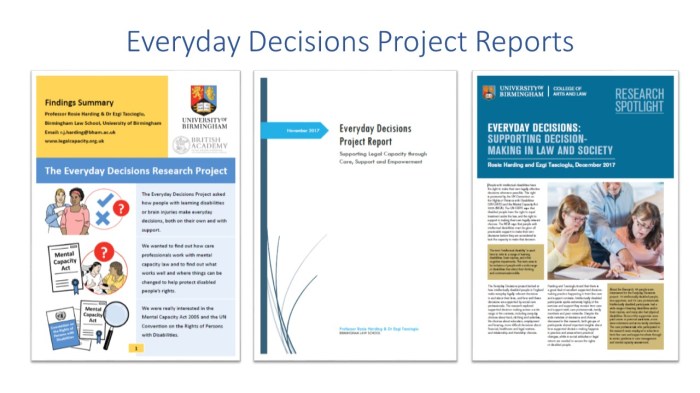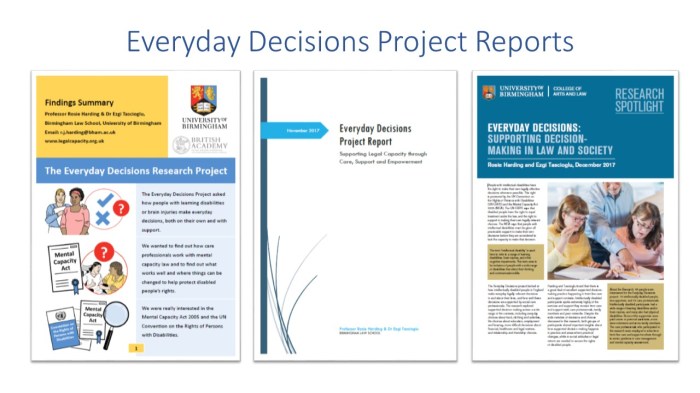Everyday habits that are spiking blood pressure sets the stage for understanding the often-overlooked factors contributing to high blood pressure. We’ll explore a range of common daily routines, from dietary choices to sleep patterns and stress management, and uncover how seemingly insignificant habits can significantly impact your blood pressure. Learn actionable strategies for identifying and modifying these habits to achieve better cardiovascular health.
This exploration dives into the intricate relationship between everyday routines and blood pressure, offering practical insights into how subtle choices can impact your well-being. We’ll uncover the physiological mechanisms behind these connections and offer actionable steps for creating healthier habits.
Identifying Common Habits

High blood pressure, or hypertension, is a significant health concern affecting millions globally. Understanding the daily routines that contribute to elevated blood pressure is crucial for preventative measures and lifestyle adjustments. This knowledge empowers individuals to proactively manage their cardiovascular health.Identifying and modifying these habits can significantly reduce the risk of developing hypertension and its related complications. By understanding the physiological mechanisms behind these routines, individuals can make informed choices that promote healthier blood pressure levels.
Common Daily Routines Linked to Elevated Blood Pressure
Daily routines often play a significant role in blood pressure regulation. Certain habits can put extra stress on the cardiovascular system, leading to elevated blood pressure. Recognizing these patterns is the first step towards implementing positive changes.
- Inadequate Sleep: Insufficient sleep disrupts the body’s natural blood pressure regulation mechanisms. The body’s stress response system remains activated, leading to sustained elevated blood pressure levels.
- Excessive Sodium Intake: A high-sodium diet causes the body to retain more water, increasing blood volume and putting added pressure on the blood vessels.
- Lack of Physical Activity: Sedentary lifestyles contribute to a higher risk of hypertension. Regular exercise helps maintain healthy blood pressure levels.
- High Alcohol Consumption: Excessive alcohol intake can cause a temporary spike in blood pressure, and chronic consumption can lead to long-term elevations.
- Stressful Environments: Chronic stress activates the body’s “fight-or-flight” response, increasing heart rate and blood pressure.
- Smoking: Nicotine in tobacco constricts blood vessels, increasing blood pressure and damaging the lining of the arteries.
- Poor Diet (High in Saturated Fats and Trans Fats): A diet high in saturated and trans fats can contribute to increased cholesterol levels and plaque buildup in the arteries, leading to higher blood pressure.
- Inadequate Hydration: Dehydration can cause blood vessels to constrict, leading to elevated blood pressure.
- Lack of Potassium Intake: Potassium helps regulate blood pressure by counteracting the effects of sodium. A low potassium intake can lead to elevated blood pressure.
- Ignoring Chronic Pain: Chronic pain conditions can trigger a cascade of physiological responses, leading to prolonged periods of elevated blood pressure.
Physiological Mechanisms Linking Habits to Blood Pressure
The physiological mechanisms behind these habits are complex and multifaceted. Understanding these connections is key to designing effective interventions.
- Inadequate Sleep: Lack of sleep disrupts the body’s natural circadian rhythm, affecting hormone regulation and blood pressure control.
- Excessive Sodium Intake: Sodium retention increases blood volume, causing the heart to work harder to pump blood through the circulatory system, leading to elevated blood pressure.
- Lack of Physical Activity: Physical inactivity lowers cardiovascular fitness, making the heart work harder and increasing blood pressure.
- High Alcohol Consumption: Alcohol has a vasoconstricting effect, narrowing blood vessels and increasing blood pressure. Chronic consumption damages the heart and blood vessels, leading to sustained hypertension.
- Stressful Environments: Stress hormones, like adrenaline and cortisol, increase heart rate and constrict blood vessels, leading to elevated blood pressure.
- Smoking: Nicotine causes vasoconstriction, increasing peripheral resistance and blood pressure.
- Poor Diet (High in Saturated Fats and Trans Fats): High cholesterol and plaque buildup in the arteries restrict blood flow and increase blood pressure.
- Inadequate Hydration: Dehydration reduces blood volume, leading to increased blood viscosity and blood pressure.
- Lack of Potassium Intake: Insufficient potassium can disrupt the sodium-potassium balance, leading to impaired blood pressure regulation.
- Ignoring Chronic Pain: Chronic pain triggers the release of stress hormones, leading to sustained elevation in blood pressure.
Examples of Incorporating Healthier Habits
Transforming these habits into healthier alternatives can have a profound impact on blood pressure management. Consistent changes can significantly lower the risk of developing hypertension.
- Prioritize Sleep: Establish a regular sleep schedule, create a relaxing bedtime routine, and optimize your sleep environment.
- Reduce Sodium Intake: Read food labels carefully, opt for low-sodium alternatives, and choose fresh, unprocessed foods.
- Incorporate Regular Exercise: Engage in physical activities you enjoy, like brisk walking, swimming, or cycling, for at least 150 minutes per week.
- Moderate Alcohol Consumption: Limit alcohol intake to recommended guidelines, or consider abstaining altogether.
- Manage Stress: Practice stress-reducing techniques like meditation, deep breathing, or yoga.
- Quit Smoking: Seek support and utilize resources available for smoking cessation.
- Healthy Diet: Prioritize a diet rich in fruits, vegetables, whole grains, and lean proteins, while limiting saturated and trans fats.
- Stay Hydrated: Carry a water bottle and drink water throughout the day.
- Increase Potassium Intake: Consume potassium-rich foods like bananas, spinach, and sweet potatoes.
- Seek Professional Help for Chronic Pain: Consult a healthcare professional to develop a pain management strategy.
Comparison of Habit Effects on Blood Pressure Regulation
This table summarizes the effects of different habits on blood pressure regulation.
| Habit | Mechanism | Effect on Blood Pressure |
|---|---|---|
| Inadequate Sleep | Disrupts circadian rhythm, affects hormone regulation | Elevated blood pressure |
| Excessive Sodium Intake | Increases blood volume, elevates pressure | Elevated blood pressure |
| Lack of Physical Activity | Lowers cardiovascular fitness | Elevated blood pressure |
| High Alcohol Consumption | Vasoconstriction, damages blood vessels | Elevated blood pressure |
| Stressful Environments | Activates stress hormones, constricts vessels | Elevated blood pressure |
Dietary Patterns and Blood Pressure
Dietary choices play a significant role in blood pressure regulation. A diet high in certain nutrients can contribute to elevated blood pressure, while a balanced diet can help maintain healthy levels. Understanding the connection between diet and blood pressure is crucial for preventing and managing this common health concern.Dietary patterns significantly impact blood pressure. Certain foods and nutrients can either elevate or lower blood pressure, affecting cardiovascular health.
By identifying the dietary patterns linked to high blood pressure, individuals can make informed choices to support their overall well-being.
Specific Dietary Choices and Blood Pressure Fluctuations
Various dietary choices can contribute to blood pressure fluctuations. Excessive consumption of sodium, processed foods, and saturated fats, for example, can increase blood pressure, while diets rich in fruits, vegetables, and whole grains can help maintain healthy levels.
Types of Diets Linked to High Blood Pressure
Several dietary patterns are associated with an increased risk of high blood pressure.
- High-Sodium Diets: A diet excessively high in sodium can lead to water retention and increased blood volume, thus elevating blood pressure. Processed foods, fast food, and many restaurant meals are often high in sodium. An example of a high-sodium diet would include regular consumption of canned soups, processed meats, and salty snacks, contributing to high blood pressure.
- High-Fat Diets (Specifically Saturated and Trans Fats): Diets rich in saturated and trans fats can contribute to elevated blood pressure. Saturated fats are found in animal products like red meat, full-fat dairy, and processed foods. Trans fats are often found in commercially baked goods, fried foods, and some processed snacks. Examples of high-fat diets include those primarily consisting of red meat, fried foods, and commercially baked pastries, increasing the risk of high blood pressure.
- High-Sugar Diets: High sugar intake, particularly from sugary drinks and processed foods, can elevate blood pressure. Excess sugar can lead to insulin resistance and inflammation, which contribute to hypertension. Examples of a high-sugar diet would include regular consumption of sugary sodas, candy, and desserts, raising blood pressure.
- Low-Potassium Diets: Diets deficient in potassium can increase blood pressure. Potassium helps regulate blood pressure by counteracting the effects of sodium. Examples of a low-potassium diet would be one with limited fruits and vegetables, reducing the beneficial effects of potassium and potentially increasing blood pressure.
The Role of Sodium, Sugar, and Saturated Fats in Blood Pressure Regulation, Everyday habits that are spiking blood pressure
Understanding the impact of sodium, sugar, and saturated fats on blood pressure is essential for maintaining cardiovascular health.
- Sodium: Excessive sodium intake leads to fluid retention, increasing blood volume and pressure. The body retains water to compensate for the excess sodium, leading to a rise in blood pressure. The recommended daily sodium intake is generally low.
- Sugar: High sugar intake can contribute to insulin resistance and inflammation, both of which negatively impact blood pressure regulation. Excess sugar can lead to increased blood pressure and increase the risk of cardiovascular disease. It’s crucial to limit added sugars in the diet.
- Saturated Fats: Saturated fats can promote the buildup of cholesterol in the arteries, narrowing the blood vessels and increasing blood pressure. This reduced blood flow can increase the risk of heart disease and stroke.
Summary of Dietary Components and Blood Pressure
The table below summarizes the effects of different dietary components on blood pressure.
Ever noticed how those seemingly harmless daily routines can silently elevate your blood pressure? Skipping meals, staying up too late, or even not getting enough exercise can all contribute. While the focus often stays on these everyday habits, it’s interesting to explore if certain supplements might also play a role, like creatine. Studies on can creatine boost cognition are ongoing, but understanding how these elements might influence our overall well-being is key.
Ultimately, maintaining a balanced lifestyle with mindful habits remains the best strategy for keeping blood pressure in check.
| Dietary Component | Effect on Blood Pressure | Examples |
|---|---|---|
| High Sodium | Increased blood pressure due to fluid retention | Processed foods, fast food, canned goods |
| High Saturated Fat | Increased blood pressure due to cholesterol buildup | Red meat, full-fat dairy, processed foods |
| High Sugar | Increased blood pressure due to insulin resistance and inflammation | Sugary drinks, processed foods, desserts |
| Low Potassium | Potentially increased blood pressure due to reduced sodium regulation | Diets low in fruits and vegetables |
Lifestyle Factors Influencing Blood Pressure

Our daily routines and emotional well-being play a significant role in maintaining healthy blood pressure. Understanding how lifestyle factors interact with blood pressure regulation empowers us to make informed choices for better cardiovascular health. This section delves into the crucial connection between sleep, activity, stress, and blood pressure management.Lifestyle choices directly impact blood pressure levels, which in turn influence the risk of cardiovascular diseases.
High blood pressure can stem from surprisingly common daily routines. Skipping regular exercise, consuming excessive sodium, and a lack of sleep are major culprits. Understanding the prevalence of various health issues, like those reflected in orthopedic statistics and demographics, orthopedic statistics and demographics , can help us appreciate the multifaceted nature of overall health.
These lifestyle choices often have a ripple effect on our overall well-being, potentially impacting various aspects of our health.
Maintaining a healthy lifestyle is key to mitigating this risk. Factors like consistent sleep patterns, appropriate physical activity, and stress management techniques can significantly affect blood pressure readings.
Sleep Patterns and Blood Pressure
Adequate sleep is crucial for maintaining optimal blood pressure. Sleep deprivation disrupts the body’s natural rhythms, potentially leading to elevated blood pressure. Chronic sleep loss can increase the risk of developing hypertension. The body’s physiological processes, including hormone regulation, are impacted by consistent sleep patterns. A lack of sleep can disrupt the delicate balance of these processes, leading to elevated blood pressure.
Activities Contributing to or Reducing Blood Pressure
Physical activity is a cornerstone of maintaining healthy blood pressure. Regular exercise helps regulate blood pressure by strengthening the cardiovascular system and improving blood vessel function. Conversely, a sedentary lifestyle can negatively impact blood pressure.
- Sedentary Activities: Prolonged periods of sitting or inactivity can increase blood pressure, particularly in individuals who spend long hours at a desk or in front of a computer screen. This can lead to a gradual rise in blood pressure over time, especially if not counteracted by regular physical activity.
- Aerobic Exercise: Activities like brisk walking, jogging, swimming, and cycling are known to lower blood pressure. These activities strengthen the heart and improve blood vessel elasticity, helping to maintain healthy blood pressure levels. Regular aerobic exercise can be very beneficial for maintaining cardiovascular health.
- Resistance Training: Weightlifting and other resistance exercises can also positively impact blood pressure. Building muscle mass improves overall metabolic function, which can contribute to healthier blood pressure regulation.
Impact of Stress and Emotional Responses on Blood Pressure
Stress and emotional responses significantly affect blood pressure. Stress triggers the release of hormones like adrenaline and cortisol, leading to a temporary increase in blood pressure. Chronic stress can result in sustained high blood pressure, increasing the risk of hypertension and related health issues. Stressful situations can elevate blood pressure and affect cardiovascular health, leading to potentially long-term negative consequences.
Managing Stress and Improving Sleep Hygiene
Effective stress management techniques can help maintain healthy blood pressure. Relaxation techniques such as deep breathing exercises, meditation, and yoga can reduce stress and its impact on blood pressure. Improving sleep hygiene is also crucial. Consistent sleep schedules, a relaxing bedtime routine, and a sleep-conducive environment can contribute to better sleep quality, which in turn can help regulate blood pressure.
Physical Inactivity and Blood Pressure Regulation
A lack of physical activity contributes to elevated blood pressure levels. Individuals who are physically inactive tend to have higher blood pressure readings compared to those who engage in regular exercise. A sedentary lifestyle can impair cardiovascular health, leading to elevated blood pressure and other related health issues.
Comparison of Different Types of Exercise on Blood Pressure
Different types of exercise can have varying effects on blood pressure. While aerobic exercise is effective in lowering blood pressure, resistance training can also contribute to improved blood pressure regulation by strengthening the heart and improving blood vessel function. The combined effects of various exercise types can contribute to overall cardiovascular health.
Ever wondered why your blood pressure is always a little too high? It might be those seemingly harmless everyday habits. For example, skipping meals or not getting enough sleep can really take a toll. Plus, stress from a multitude of factors can contribute significantly. Sometimes, unexpected skin breakouts like back acne and body acne back acne and body acne can also reflect underlying health issues, which could be linked to unhealthy habits impacting blood pressure.
So, keeping a close eye on your lifestyle choices is crucial for maintaining good health overall.
Understanding the Impact of Specific Habits
High blood pressure, or hypertension, is a serious health concern that can lead to various complications. Understanding the impact of everyday habits on blood pressure is crucial for proactive management and prevention. By recognizing the role specific habits play in blood pressure regulation, individuals can make informed choices to maintain healthy blood pressure levels.
Excessive Caffeine Consumption and Blood Pressure
Caffeine, a stimulant found in coffee, tea, and various other beverages, can temporarily raise blood pressure in some individuals. This effect is usually short-lived and often doesn’t pose a significant concern for people who consume caffeine in moderation. However, excessive caffeine intake can contribute to chronic elevated blood pressure in susceptible individuals. Regular consumption of large amounts of caffeinated beverages may lead to an increased risk of hypertension over time.
The effect is often more pronounced in individuals with pre-existing conditions or those who are sensitive to caffeine.
Alcohol Consumption and Blood Pressure
Alcohol consumption, while enjoyed in moderation by many, can have a complex relationship with blood pressure. Light to moderate alcohol intake might have a slight effect on increasing blood pressure, and the effect is temporary, but excessive alcohol consumption consistently leads to elevated blood pressure. Chronic heavy drinking significantly raises the risk of hypertension. Furthermore, alcohol’s dehydrating effects can worsen existing blood pressure issues.
Smoking and Blood Pressure
Smoking significantly impacts blood pressure by constricting blood vessels. This constriction forces the heart to work harder, leading to elevated blood pressure. Nicotine, a primary component of tobacco smoke, immediately increases blood pressure and heart rate. The long-term effects of smoking include a higher risk of developing hypertension and associated cardiovascular diseases. A smoker’s blood pressure often rises during and immediately after a cigarette, highlighting the immediate impact of smoking on blood pressure regulation.
Chronic Sleep Deprivation and Blood Pressure
Chronic sleep deprivation disrupts the body’s natural blood pressure regulation mechanisms. Lack of sufficient sleep can lead to hormonal imbalances, which can impact blood pressure. The body releases hormones during sleep that help regulate blood pressure. A consistent lack of sleep can affect these crucial processes, increasing the risk of high blood pressure. The body’s response to stress is also impacted by sleep deprivation, which can further contribute to blood pressure fluctuations.
Dehydration and Blood Pressure
Dehydration leads to reduced blood volume, which can cause the blood vessels to constrict. This constriction increases blood pressure as the heart has to work harder to pump blood through the narrower vessels. Adequate hydration is essential for maintaining healthy blood pressure levels. Symptoms of dehydration can be confused with symptoms of high blood pressure.
Summary Table: Impact of Habits on Blood Pressure
| Habit | Impact on Blood Pressure |
|---|---|
| Excessive Caffeine Consumption | Temporary increase in blood pressure, potential for chronic elevation in susceptible individuals |
| Alcohol Consumption (Excessive) | Elevated blood pressure, increased risk of hypertension |
| Smoking | Significant blood pressure increase, immediate and long-term risk of hypertension and cardiovascular disease |
| Chronic Sleep Deprivation | Disruption of natural blood pressure regulation mechanisms, increased risk of hypertension |
| Dehydration | Reduced blood volume, blood vessel constriction, elevated blood pressure |
Practical Strategies for Change: Everyday Habits That Are Spiking Blood Pressure
Taking control of your blood pressure involves more than just understanding the problem; it requires actionable steps. This section focuses on practical strategies to modify blood pressure-elevating habits, incorporating healthier alternatives, and building sustainable routines. Success in managing blood pressure hinges on consistent effort and a proactive approach.
Actionable Steps for Modifying Habits
Implementing changes requires a structured approach. Start with small, achievable goals. For example, instead of aiming for a complete overhaul of your diet overnight, focus on incorporating one healthy meal replacement per week. Gradually increase the frequency of these healthier choices. This gradual approach minimizes the likelihood of setbacks and promotes long-term adherence.
- Establish a Consistent Sleep Schedule: Aim for 7-9 hours of quality sleep each night. Regular sleep patterns regulate hormones that influence blood pressure. Consistent sleep helps regulate cortisol levels, crucial for managing stress, which is a major contributor to elevated blood pressure.
- Implement Regular Physical Activity: Engage in at least 150 minutes of moderate-intensity or 75 minutes of vigorous-intensity aerobic activity per week. Physical activity strengthens the cardiovascular system and promotes overall health, which directly impacts blood pressure.
- Adopt a Healthy Diet: Focus on fruits, vegetables, whole grains, and lean protein. Limit processed foods, saturated fats, and sodium. A balanced diet can significantly reduce blood pressure levels over time.
- Manage Stress Effectively: Practice stress-reducing techniques such as meditation, yoga, deep breathing exercises, or spending time in nature. Chronic stress is a significant contributor to high blood pressure.
Incorporating Healthier Alternatives
Replacing unhealthy habits with healthier alternatives is key to long-term success. This involves mindful substitutions rather than complete elimination. For instance, swap sugary drinks for water or unsweetened tea. Similarly, choose whole-grain bread over white bread.
- Swap Sugary Drinks for Water or Unsweetened Beverages: Sugary drinks contribute to weight gain, which is a major risk factor for high blood pressure. Replacing these with water or unsweetened beverages can significantly improve overall health and blood pressure.
- Choose Whole Grains over Refined Grains: Whole grains contain more fiber, which aids in regulating blood sugar levels. This, in turn, can contribute to better blood pressure control. For example, opting for brown rice over white rice is a simple yet effective change.
- Select Lean Protein Sources: Lean protein sources like fish, poultry without skin, and beans are lower in saturated fat compared to red meat. This can help manage cholesterol and blood pressure levels.
- Limit Sodium Intake: Reduce the amount of salt in your diet. High sodium intake can lead to fluid retention and elevated blood pressure. Gradually reducing salt intake is more sustainable than sudden elimination.
Finding Additional Support
Seeking support from healthcare professionals, support groups, and educational resources can significantly enhance the effectiveness of your blood pressure management plan. These resources provide tailored advice and encouragement.
- Consult Your Healthcare Provider: Your doctor can provide personalized recommendations and monitor your progress. Regular check-ups are essential for tracking blood pressure and adjusting your plan as needed.
- Join Support Groups: Connecting with others facing similar challenges can offer valuable encouragement and practical tips. Sharing experiences and learning from others’ successes can significantly bolster motivation.
- Utilize Educational Resources: Numerous websites, books, and articles provide information on blood pressure management and healthy lifestyle choices. These resources can offer valuable insights and guidance.
Building Healthy Routines Gradually
Building healthy routines takes time and consistency. Start by making small, manageable changes that you can maintain over the long term. This gradual approach prevents feelings of overwhelm and fosters a sustainable lifestyle.
- Start with One Change at a Time: Focusing on one habit at a time, such as increasing physical activity, allows you to adjust and master it before moving to the next.
- Track Your Progress: Monitoring your blood pressure readings and lifestyle changes can provide a clear picture of how adjustments are affecting you. This helps you stay motivated and adjust your plan as needed.
- Reward Yourself: Celebrating small victories can boost motivation and reinforce positive behavior. This could be anything from treating yourself to a relaxing activity to recognizing your achievements.
Practical Strategies to Change Blood Pressure-Elevating Habits
| Strategy | Expected Outcome |
|---|---|
| Consistent sleep schedule (7-9 hours) | Improved hormone regulation, reduced stress, potentially lower blood pressure |
| Regular physical activity (150 mins/week moderate or 75 mins/week vigorous) | Strengthened cardiovascular system, improved overall health, potentially lower blood pressure |
| Healthy diet (fruits, vegetables, whole grains, lean protein) | Improved nutrient intake, potentially lower blood pressure, reduced risk of heart disease |
| Stress management techniques (meditation, yoga) | Reduced stress levels, improved overall well-being, potentially lower blood pressure |
Visual Representation of Habit Impacts
Understanding how specific habits affect blood pressure is crucial for effective management and prevention. Visual aids, like flowcharts and illustrations, can significantly enhance our comprehension of these complex relationships. This section will delve into visual representations that highlight the interconnectedness of lifestyle choices and blood pressure levels.
Visual Representation of Habit Impacts
A flowchart, representing the cascading effect of habits on blood pressure, can effectively demonstrate the relationship. The flowchart would begin with an individual’s lifestyle choices, branching into various habits. Each habit would lead to a specific impact on blood vessels, reflected by changes in vessel diameter and elasticity. These impacts, in turn, would lead to either increased or decreased blood pressure.
The flowchart would clearly illustrate the pathways and outcomes of each habit, facilitating a quick visual understanding of the overall impact.
Flowchart Elements and Relationships
The flowchart would incorporate various elements, including:
- Lifestyle Choices: These are the starting points, including diet, exercise, stress levels, sleep patterns, and smoking.
- Specific Habits: These branch out from lifestyle choices. Examples include consuming excessive sodium, avoiding regular exercise, experiencing chronic stress, and smoking.
- Impact on Blood Vessels: This section depicts the effects of the habits on blood vessel elasticity and diameter. For example, a habit like smoking would be connected to a reduction in blood vessel diameter and increased stiffness.
- Blood Pressure Levels: These represent the resulting blood pressure readings, showing whether the habit leads to elevated, normal, or reduced blood pressure. The pathway would clearly indicate whether the habit increases or decreases blood pressure.
- Feedback Loops: The flowchart would include feedback loops to highlight the cyclical nature of some habits and their effects. For example, high blood pressure can lead to increased stress, which, in turn, can further elevate blood pressure.
Caption for the Visual Representation
“A Visual Journey Through Habits and Blood Pressure: This flowchart illustrates the interconnectedness of lifestyle choices and their impact on blood pressure. It demonstrates how specific habits influence blood vessel health, leading to either elevated or lowered blood pressure levels. Understanding these pathways empowers individuals to make informed decisions about their health.”
Illustrations of Habit Impacts on Blood Vessels
To further illustrate the impact of various habits on blood vessels, consider these examples:
- High Sodium Intake: An illustration depicting blood vessels with a buildup of salt deposits, narrowing the vessel lumen. The caption would highlight the correlation between sodium intake and reduced blood vessel elasticity, leading to hypertension.
- Lack of Exercise: An illustration showing blood vessels with reduced elasticity and less blood flow. The illustration could depict a comparison between active and inactive individuals’ blood vessels, highlighting the difference in vessel health. The caption would emphasize the importance of regular exercise for maintaining healthy blood vessels and optimal blood pressure.
- Chronic Stress: An illustration displaying blood vessels experiencing constriction due to stress hormones. The image might contrast a relaxed blood vessel with one under stress, emphasizing the impact of chronic stress on blood vessel constriction and subsequent hypertension.
- Smoking: An illustration of blood vessels that are damaged and constricted due to nicotine and other harmful substances. The illustration would highlight the narrowing of the blood vessel lumen, the loss of elasticity, and the overall negative impact on blood vessel health associated with smoking. The caption would emphasize the detrimental effect of smoking on blood pressure regulation.
Last Word
In conclusion, everyday habits play a crucial role in blood pressure regulation. By understanding the connection between specific routines and blood pressure fluctuations, you can proactively adopt healthier choices. From dietary adjustments to stress management techniques and incorporating regular exercise, this guide equips you with practical strategies to create a healthier lifestyle and maintain optimal cardiovascular well-being.







